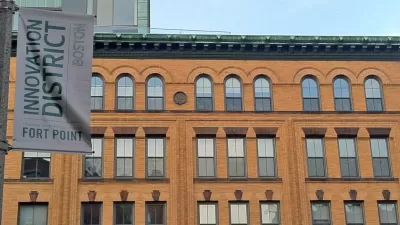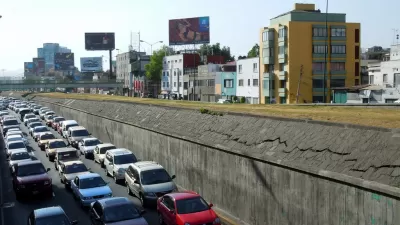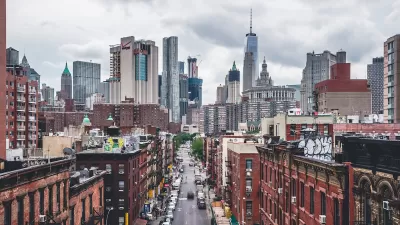Recent commenters have described cities as the locus for a new type of liberalism that benefits a broader swath of demographics. Dissenters wonder whether certain progressive cities, enabled by privilege, are merely drivers of inequality.

Standing in opposition to the "declining ability of the American political order to deliver a steadily rising standard of living to the vast middle and working classes," says Thomas B, Edsall, are mayors from New York to Seattle "committed to deploying the power of city government and aggressive wage and tax policies to attack inequality and revive social and economic mobility." Mayors of American cities may be, in fact, "charting a new course for American liberalism."
The argument follows that of Harold Meyerson, author of "The Revolt of the Cities," which provides the inspiration for Edsall's editorial/review. "Meyerson’s list of new mayors charting the new liberalism includes (but is not limited to) Pittsburgh’s Bill Peduto, Minneapolis’s Betsy Hodges, Seattle’s Ed Murray, Boston’s Martin Walsh, Santa Fe’s Javier Gonzales and, of course, New York City’s Bill de Blasio."
Edsall, however, notes a few reasons to be cautious about the power of cities. "First and foremost, a number of the cities Meyerson points to have exceptional, built-in advantages: major research universities; financial and high-tech corporate centers; substantial and strong artistic and intellectual communities. Pittsburgh, for example, has Carnegie Mellon, metropolitan Boston has Harvard and M.I.T., Seattle has Microsoft and Amazon, and New York has its own varied, almost endless resources."
The question remains, according to Edsall "whether the policies and programs developed in the nation’s thriving urban core will prove to be broadly applicable."
FULL STORY: Will Liberal Cities Leave the Rest of America Behind?

Study: Maui’s Plan to Convert Vacation Rentals to Long-Term Housing Could Cause Nearly $1 Billion Economic Loss
The plan would reduce visitor accommodation by 25,% resulting in 1,900 jobs lost.

North Texas Transit Leaders Tout Benefits of TOD for Growing Region
At a summit focused on transit-oriented development, policymakers discussed how North Texas’ expanded light rail system can serve as a tool for economic growth.

Why Should We Subsidize Public Transportation?
Many public transit agencies face financial stress due to rising costs, declining fare revenue, and declining subsidies. Transit advocates must provide a strong business case for increasing public transit funding.

How to Make US Trains Faster
Changes to boarding platforms and a switch to electric trains could improve U.S. passenger rail service without the added cost of high-speed rail.

Columbia’s Revitalized ‘Loop’ Is a Hub for Local Entrepreneurs
A focus on small businesses is helping a commercial corridor in Columbia, Missouri thrive.

Invasive Insect Threatens Minnesota’s Ash Forests
The Emerald Ash Borer is a rapidly spreading invasive pest threatening Minnesota’s ash trees, and homeowners are encouraged to plant diverse replacement species, avoid moving ash firewood, and monitor for signs of infestation.
Urban Design for Planners 1: Software Tools
This six-course series explores essential urban design concepts using open source software and equips planners with the tools they need to participate fully in the urban design process.
Planning for Universal Design
Learn the tools for implementing Universal Design in planning regulations.
Ascent Environmental
Borough of Carlisle
Institute for Housing and Urban Development Studies (IHS)
City of Grandview
Harvard GSD Executive Education
Toledo-Lucas County Plan Commissions
Salt Lake City
NYU Wagner Graduate School of Public Service





























